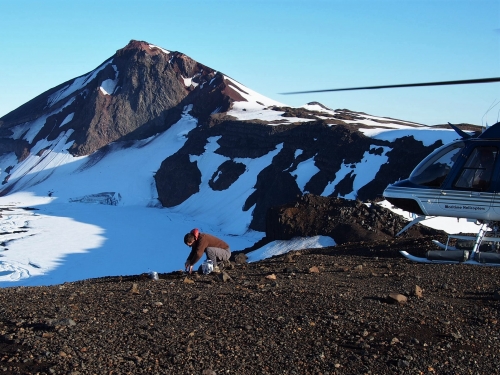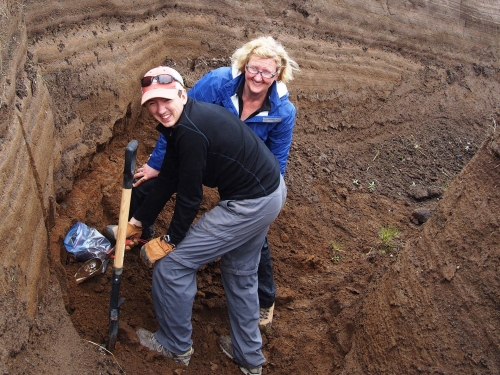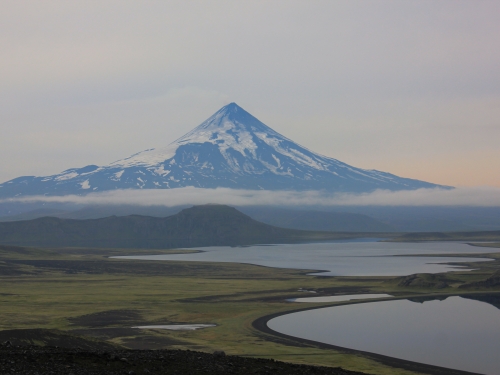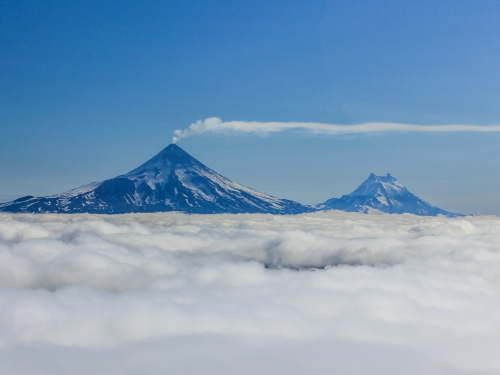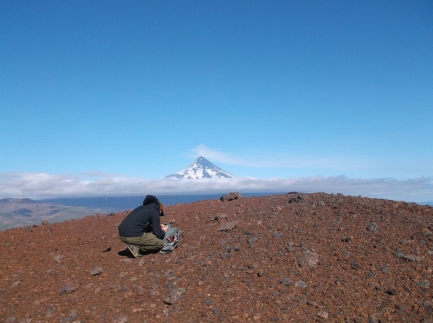
Dan Rasmussen, Peter Buck Fellow at the Smithsonian’s National Museum of Natural History, collects volcanic ash samples from Neptune Ridge, a volcanic feature on Fisher Caldera in 2015. Shishaldin Volcano stands tall off in the distance. A volcanic gas plume can be seen raising from Shishaldin’s summit. The rocks on Neptune Ridge are red because they have become oxidized, a process of chemical interaction between the rocks and the oxygen in the atmosphere. Typically, oxidized rock samples are not faithful recorders of the magma conditions at depth, and these samples were no exception. They did not help the research team investigate the water content of magmas at Fisher.
A new study, published today, March 10, in the journal Science, finds that, for the world’s most common type of volcano, magma with higher water content tends to be stored deeper in the Earth’s crust. The finding identifies what some scientists expect is the most important factor controlling the depth at which magma is stored and may bring experts one step closer to accurately forecasting volcanic eruptions.
SI-98-2022

